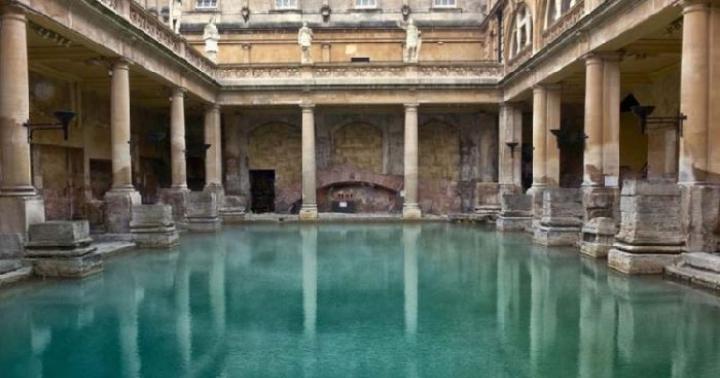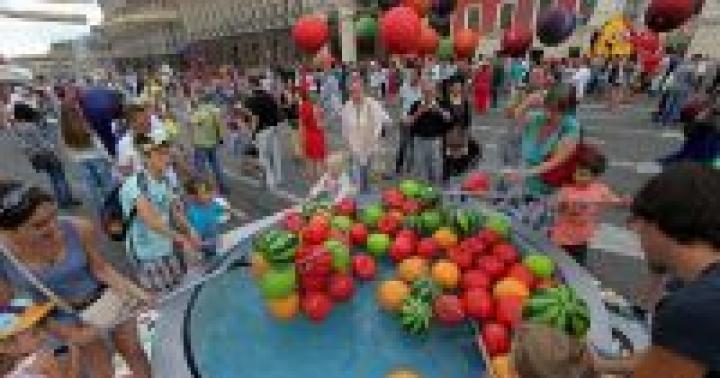Our next stop on the second day of our trip to Greek Macedonia is ancient city of DION.
I’ll say right away - again, we were only shown the museum... and what was there, behind its walls, was left to the conscience of the tour operator Mouzenidis. I consider that light and unobtrusive rain not a hindrance, but an excuse.
What is DION famous for? - its direct connection with ZEUS himself (in Greek - Dios). The city is located at the foot of Mount OLYMPUS - the abode of the Greek Gods.
The first mentions in written sources date back to 424 BC.
Dion was the cultural center of Macedonia. In the Theater of Dion, the greatest tragedian of antiquity, Euripides, staged his “Bacchae” and “Archelaus”. Temples with many statues, theaters, a stadium, and city walls decorated with sculptures were built here.
During the times of Philip II and Alexander the Great, the city hosted holidays and sports competitions before military campaigns.
During Roman rule, most of the works of art were taken from Dion to Rome, and the Turks who came in the 14th century completely destroyed it.
In ancient Dion, nine-day games dedicated to Zeus were held, and in modern Dion, the Olympic Marathon and Olympic Festival are held in the summer. Tragedies and comedies by ancient authors are still performed on the stage of the ancient theater.
Since 1983, there has been an archaeological museum in Dion, which displays finds discovered during the excavations of ancient Dion. The exhibition includes statues, funerary monuments, coins and other artifacts found during excavations of the ancient city. The museum didn’t make much of an impression on me, but there are certainly interesting exhibits there.
The duty officer at the entrance to the museum). 
Finally! The first beautiful ticket from the trip is the Museum of Ancient DION.
The archaeological sites of Greece, for the most part, have similar designs. entrance tickets. Tickets for the largest monuments indicate that they belong to a specific museum, while tickets for smaller ones modestly say “Monuments of Greece” or “Monuments of Byzantium.”
So on this ticket - “Monuments of Greece” - a fragment from a red-figure epinetron (425 BC) is depicted - an ancient Greek device used to protect a spinner’s knees when rolling out wool. And it was not found in Dion, but in Greek Eritria.

Naturally, in the city dedicated to Zeus there was a sanctuary of Olympian Zeus. The photo shows one of the halls of the museum, where the statues found during the excavations of this sanctuary are collected. In the center, the figure of Zeus himself, on the left the figure of Hera - this is the only case when two figures of the ancient Greek gods-consorts were in the same temple. Also in the sanctuary there were many figures of eagles - as you know, the EAGLE is a symbol of Zeus, a symbol of supreme power and the solar nature of the ruler of the heavens and the head of all gods.


Mosaic floor depicting the head of the Gorgon Medusa. 2nd century AD e. 
Our guide said that it was an “organ”... In general, it was once a musical instrument that worked using hydraulics - but I can’t tell you how... 
Very often you can see an image of a dog on gravestones. This is due to the fact that the Dog is a psychopomp (“guide of souls” to the underworld). A dog is a connection between two worlds.
This tombstone seemed somehow special to me - the longer you look at it, the harder it is to look away. As I see it: the dog confidently points his whole body forward, and by turning his head he invites the person not to be afraid of anything and to follow him. By taking a dog's face in his palm, a person shows that he trusts it. They look into each other's eyes, and their glances are full of tenderness...

The dog is a companion and “attribute” of Hermes, the guide of souls in afterworld. And, at the same time, the dog has the abilities of a healer and accompanies the god of medicine, Asclepius. She can heal, give birth, new life. The world of the dead is also guarded by a dog - the monstrous three-headed dog Kerber.
The goddess Hecate appears in the guise of a dog or accompanied by a pack of dogs and acts as a deity connecting the two worlds - the living and the dead.
I don’t know who is depicted in this stone, but the face is mesmerizing. 
The "Greek Hairstyle" is clearly visible here - it has become EXTREMELY fashionable these days! No matter how I try to do something similar on my head... alas, it requires thick hair.

I was absolutely delighted with the next exhibit - amazing work!
Copper head of the Roman Emperor Septimius Seviriu. 222-235 AD e.

Ceramics of different styles in museum display cases. 
Beads! Different - wonderful! 

Inscriptions on stone slabs from the Temple of Zeus - they carried a variety of information about the political and social life of Dion.

Glass vessels. 
Plates with “imprints” of feet were brought to the museum from the Temple of Isis. Such slabs with dedicatory inscriptions to the gods and their own names were left by pilgrims who had traveled a long way to the temples. The master made the outlines of the feet on marble, then carved them with special tools. The prints show that one foot is smaller than the other - this is because they belonged to a husband and wife.

There are also a lot of exhibits behind the walls of the museum - mainly tombstones that were installed on both Greek and Roman graves.

CYCLOMENS - I first saw them not in a flower shop, but in the wild.

Right next to the museum there is a large tavern where the whole group and we stopped for a snack. Lunch was not included in the price of the program. On average, we paid 35 euros for two - a couple of salads, a couple of main courses, a glass of wine, olives. Not cheap, I must say), but the portions are very large.

There are a lot of cats in Greece - but you won't see them in my photos anymore - I was mostly sad to look at them...
This cat looked quite well-fed. 
Greek salad - it seems there is nothing tastier in the world! 
There are still 15 minutes until we get on the bus - we look around.

Olympus 

The streets of modern Dion.


When for the first time in my life I saw pomegranates ripening on a branch - it was in Abkhazia - I definitely had to pick them, even though by that time they had not yet ripened.
There are tons of pomegranates in Greece - they grow on every corner! BEAUTIFUL!!!

The figs are ripe! 
But the olives are still green. Don't try the olives from the branches - they are as bitter as cinchona. 
Opposite the tavern, recently harvested tobacco was drying.

Greek tobacco belongs to the class of “oriental tobaccos” and has a thin, delicate leaf that produces a round, very soft and velvety-feeling smoke. The spear-shaped leaves range in color from light lemon to dark brown. Characterized by a well-balanced sweet and aromatic smoke, much stronger than other Orientals.


The almonds are ripe. There is a mess of nut shells on the road under the tree.

We leave DION and go even closer to Zeus - to the foot of Olympus in the village of LITOCHORO. All routes to climb Olympus begin in this village.
Olympus is the highest MOUNTAIN MASSIF in Greece. Now organized here national park, on whose territory you can find many endemic species of plants and animals. Three most high peaks Olympus is called Mytikas (2918 m), Scolio (2912 m) and Stefani (2905 m).
In ancient Greek mythology, Olympus is a sacred mountain, the seat of the gods led by Zeus. In this regard, the Greek gods are often called “Olympians.”

Olympus did not appear to us in all its glory - it was covered by clouds, and the distant peaks behind them could not be seen.
“There is neither rain nor snow in the kingdom of Zeus; there is always a bright, joyful summer there. And below clouds swirl, sometimes they cover the distant land. There, on earth, spring and summer are replaced by autumn and winter, joy and fun are replaced by misfortune and grief True, even the gods know sorrows, but they soon pass, and joy reigns again on Olympus."

We leave Litochoro - it's raining and we head back to Thessaloniki.


ALL CHAPTERS OF OUR GREEK JOURNEY.
There is an ancient town - Ancient Dio n. For a long time he was in the shadow of such largest cities like Delphi and Athens. And now it does not go unnoticed by travelers.
Dion is a city that was dedicated to Zeus. The world-famous great commander Alexander the Great spent his entire youth here. From this city he went on a campaign that led him to death.
Today, entrance to this ancient city is paid, but the impressions of everything you see will be simply amazing and unforgettable. The entire territory of the ruins can be roughly divided into 2 parts:
1. Well preserved, where even after strong and numerous earthquakes there remained neighborhoods with residential villas, public buildings and baths.
2. Ruins of cultural temple complex where incredible interesting object is the temple of Isis (to be more precise, the ruins of this sanctuary).
A river flows through the city, carrying its majestic waters from Olympus. Since ancient times it has served for local residents source of vital moisture. It was navigable, i.e. was indeed a very large transport artery. But today it is precisely this that threatens the preservation of most monuments architectural monuments antiquity, flooding them. And maybe this happens by the will of the gods themselves.
Residential area of Dion
This part of the ancient city is the most interesting and intriguing. This is noted by every traveler who has been here at least once. Even the main road already makes a lasting impression. It is paved with huge boulders. At the same time, the boundaries of this trail are designed in the form of curbs. Along the road on one side there are many administrative buildings. But on the other side, there are charming villas that belonged to wealthy citizens of that time.
Everything is perfect in these villas:
There are luxurious floors created using the mosaic technique;
There are numerous swimming pools;
The architecture is incredibly diverse and vibrant.
You just need to add a little of your own imagination and imagine how local residents look out of the windows. And someone is walking along the streets among all these buildings. You can even draw Alexander the Great himself, walking through local neighborhoods with his friends and comrades, discussing a plan for revenge on the Persians.
When the Romans came to power in Greece, Dion began to change somewhat. At this time, not only thermal baths appeared in the city, but also toilets, and running water was installed. It was the Romans who ordered the construction of numerous temples here.
Since 1920, Dion has become a site where archaeological excavations are constantly carried out. They don't stop today. Perhaps scientists will find many more secrets and mysteries of antiquity that this ancient city dedicated to Zeus conceals.
Ancient Dion It also has its own unique Archaeological Museum. All those artifacts that were ever found on the territory of the city during excavations are presented here. In the museum's collection you can see ancient coins, sculptures, monuments, household items and much more.
All travelers who are interested in the antiquities and history of Greece really want to come here. Therefore, you should not miss the opportunity to be here. Especially if your vacation spot is
Dion Celine- Celine Dion Full name Celine Marie Claudette Dion Date of birth March 30, 1968 (age 41) Place of birth ... Wikipedia
Dion, Celine- Celine Dion Céline Dion ... Wikipedia
Greece- I Ancient Greece, Hellas (Greek Hellás), the general name of the territory of the ancient Greek states that occupied the southern Balkan Peninsula, islands Aegean Sea, the coast of Thrace, the western coastline of Asia Minor and spread their... ... Great Soviet Encyclopedia
GREECE PART I- [Greek Republic; Greek Ελληνική Ϫημοκρατία], state in the southeast. Europe, occupying the south of the Balkan Peninsula. Territory 131,944 sq. km, including islands of 25 thousand square meters. km, the coastline is 4100 km long (including the islands, about 15 thousand km). On the… … Orthodox Encyclopedia
Celine Dion- (Celine Dion) Full name Celine Marie Claudette Dion (French Céline Marie Claudette Dion Date of birth March 30, 1968 (41 years old) Place of birth ... Wikipedia
ANCIENT GREECE- territory in the south of the Balkan Peninsula (see also the articles Antiquity, Greece). The history of D.G. covers the period from the beginning. II millennium BC to the beginning I millennium AD Geography and ethnography Phaistos disc. XVII century BC (Archaeological Museum in Heraklion, ... ... Orthodox Encyclopedia
Let's Talk About Love (Celine Dion album)- This term has other meanings, see Let’s Talk About Love. Let's Talk About Love ... Wikipedia
Lower Macedonia- (violet) as the core of the Macedonian kingdom. Lower Macedonia or Macedonia proper historical geographical term. Included the coastal plain between the river ... Wikipedia
Titanic (film, 1997)- This is an article about a film from 1997, perhaps you were looking for an article about a film from another year. See Titanic (disambiguation). Titanic Titanic ... Wikipedia
Books
- Greece. Hellas. From Athens to the Peloponnese, A. G. Moskvin, S. M. Burygin. The new issue of the "Historical Guide" continues the series of books dedicated to the land of Hellas. This time the reader will get acquainted with the historical and cultural riches of mainland Greece. In the book…
Ancient city Dion (Greece) - description, history, location. Exact address, phone number, website. Tourist reviews, photos and videos.
- Last minute tours to Greece
Previous photo Next photo


Antique city Dion, dedicated to Zeus, was for many years overshadowed by the glory of Athens and Delphi, but now it has also become popular among tourists. Firstly, the famous commander Alexander the Great grew up here, and it was from here that he began his last campaign. And secondly, there are unique historical monuments on the territory.
Since the mid-20th century, Dion has become the center of archaeological excavations, and they are carried out even today. Scientists are excavating new structures and trying to unravel the mysteries of the ancient monastery and reveal its secrets. Over decades of research, a lot of interesting things were found, and over time the city began to be divided into two parts.
What to see
The first part is a residential area. Despite numerous earthquakes, it is surprisingly well preserved and consists of streets, houses, baths and public buildings. On one side of the main road paved with huge boulders with curbs there are administrative buildings, and on the other there are luxurious villas that belonged to noble citizens of those times. They still feature mosaic floors, swimming pools and striking architectural details. Other architectural and engineering delights include temples, baths, plumbing and toilets - all of this was built during the period of Roman rule.
The second part is represented by the ruins of the old cultural center- temple complex. Its highlight is the ruins of the temple of Isis, the goddess who became the ideal of female beauty and motherhood. The sanctuary is shrouded in an atmosphere of mystery and retains the spirit of past centuries.
Everything that was found in the settlement is in the Archaeological Museum of Dion. Artifacts, household items, collections of ancient coins, monuments, sculptures and a host of other interesting things are presented to tourists.
It is also interesting that a river flows through the city, taking its sources on Mount Olympus. During the period of Antiquity, it provided local residents with life-giving moisture and was a transport artery along which trade and cargo ships. However, these days it has become a threat to the preservation of historical heritage, as its waters regularly flood unique buildings.
Practical information
To get here, you need to get to the Pieria region, which is about 90 km from Thessaloniki. You can do this by train or bus. Both buses and trains depart from Thessaloniki KTEL Makedonia transport station, located at Monastirou 67.
She made an invaluable contribution to European culture. Literature, architecture, philosophy, history, other sciences, state system, laws, art and myths of ancient Greece laid the foundation of modern European civilization. Greek gods known all over the world.


